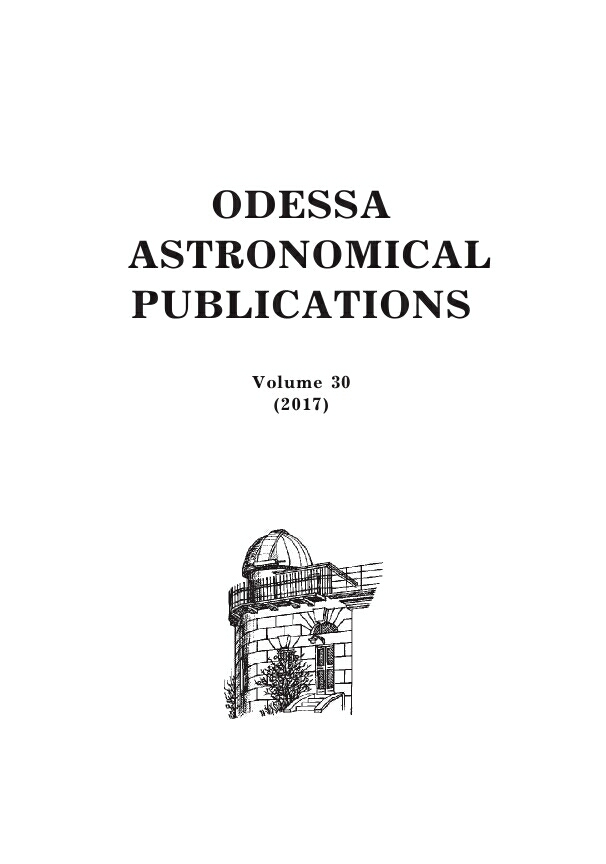MICROWAVE EMISSION OF SOLAR FLARES: CORONAL MASS EJECTIONS AND SHOCK WAVES
DOI:
https://doi.org/10.18524/1810-4215.2017.30.114670Ключові слова:
Coronal mass ejections (CMEs), shock wavesАнотація
Coronal mass ejections (CMEs) mostly affect the geomagnetic field. These structures are observed and studied with coronagraphic images thereforewe don’t see the corona in the plane of the sky and the measurements of the propagation speed for solar disk events are not accessible to coronagraphic observations. This suggests that microwave emission of solar flares that can be attributed to the gyrosynchrotron mechanism of mildly relativistic electrons can be used. In turn, the relationship between coronal shock waves and CMEs also remains unclear. The data set that we use in this study is based on microwave (μ) observations of spectral fluxes Fμ at 8.8 GHz obtained with the Radio Solar Telescope Network for the 124 proton solar events . The correlation coefficient r between the CME velocities VCME and integral fluxes of microwave emission ∫Fμdt achieves of about 0.8 while it does not exceed 0.36 between VCME and the shock waveelocities. It has been found the quite strong correlation between the growth rate of microwave emission and the deceleration of frequency drift in the frequency range of25-180 GHz (r ≈ 0.66). The obtained results suggest that microwave observation can be used to predict VCME and the shock wave generation occurs in the region of flare energy release.
Посилання
Akin'yan S.T. et al.: 1977, Geomagnetizm i Aeronomiia, 17, 10.
Akin'yan S.T. et al.: 1978, Geomagnetizm i Aeronomiia, 18, 577.
Cairns I.H. at al.: 2003, Space Sci. Rev., 107, 27.
Chertok I.M.: 1982, Geomagnetizm i Aeronomiia, 22, 182.
Chertok I.M. et al.: 1987, Geomagnetizm i Aeronomiia, 27, 362.
Classen H.T. et al.: 2002, A&A, 384, 1098.
Daibog E.I. et al.: 1987, Izv. AN SSSR, ser.ph., 51, 1825.
Daibog E.I. et al.: 1988, Izv. AN SSSR, ser.ph., 52, 2403.
Daibog E.I. et al.: 1989, Letters to the Astron. J., 15, 991.
Daibog E.I. et al.: 1993, Solar Phys., 144, 361.
Gopalswamy et. al.: 1998, J. Geophys. Res., 103, 307.
Lipatov B.N. et al.: 2002, Izv. of HEIs, Radiophysics, 65, № 2, 83.
Melnikov V.F. et al.: 1990, Solar-Terrestrial Predictions, US Dep. Of Comm., NOAA, Boulder, Co., 1, 533.
Melnikov V.F., et al.: 1991, Space Research., 29, 95.
Ochelkov Yu.P.: 1986, Geomagnetism and Aeronomy, 26, № 6, 1007.
Vrsnak B. et al.: 1995, Solar Phys., 158, 331.
Wagner W.J. et al.: 1983, A&A, 120, 136.
##submission.downloads##
Опубліковано
Як цитувати
Номер
Розділ
Ліцензія
Авторське право (c) 2017 Odessa Astronomical Publications

Ця робота ліцензується відповідно до Creative Commons Attribution-NonCommercial 4.0 International License.
Відповідно Закону України про авторське право і суміжні права N 3792-XII від 23 грудня 1993 року
